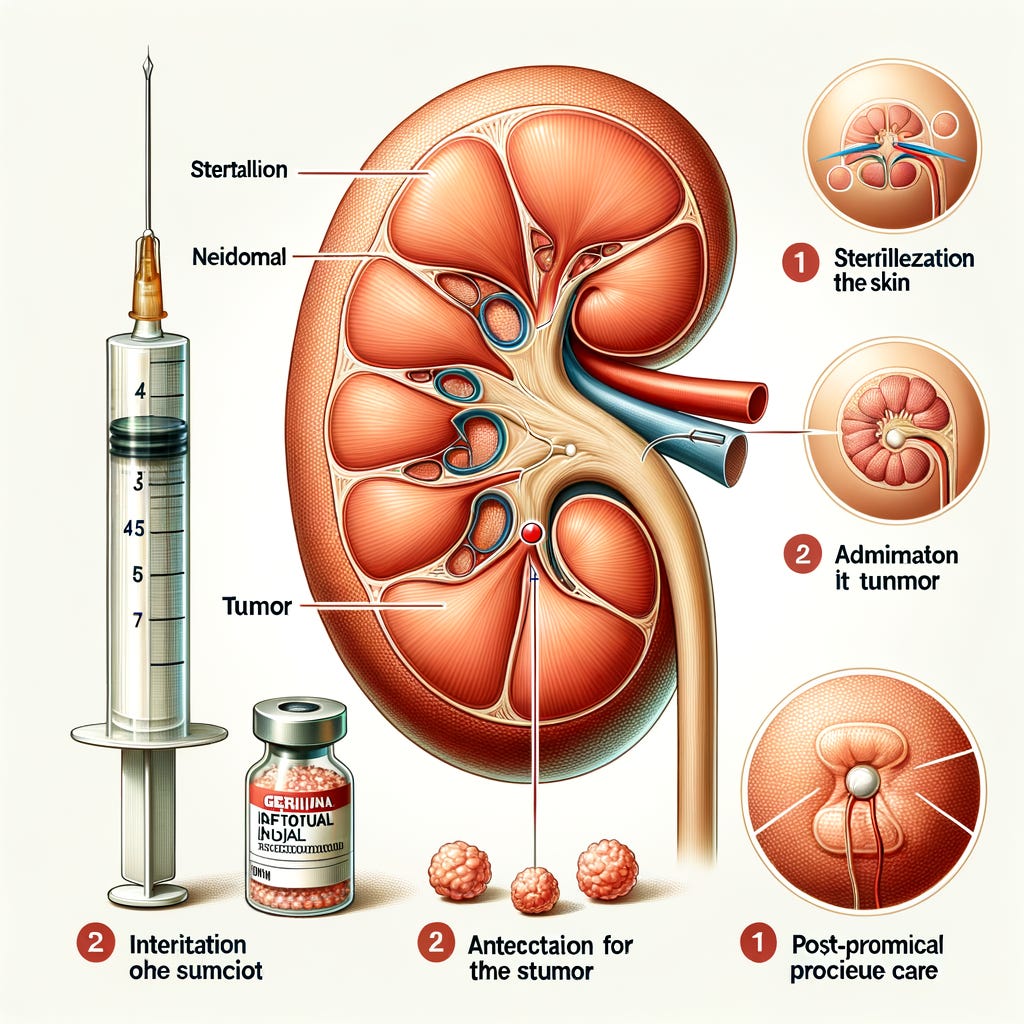12. Guidelines for Intratumoral Injection of Chlorine Dioxide in Kidney Cancer
12.1 Indications
12.1.1 All pathological types of kidney cancer.
12.1.2 Elderly or frail patients with contraindications for surgery.
12.1.3 Recurrence of kidney cancer post-surgery.
12.1.4 Normal bleeding and clotting times.
12.2 Contraindications
12.2.1 Patients with active diabetes or tuberculosis.
12.2.2 Serious renal dysfunction and severe anemia.
12.2.3 Cachexia.
12.2.4 Platelet count < 60×10⁹/L.
12.3 Puncture Needle and Auxiliary Instruments
Use a 23G×15.0 cm or 25G×9.0 cm puncture needle, 10–20 ml syringe.
12.4 Pre-treatment Preparation
12.4.1 Complete necessary examinations: routine blood, urine, and stool tests, blood biochemistry, liver and kidney function tests, ECG, ultrasound, or tumor markers.
12.4.2 Discuss the procedure with the patient and obtain consent.
12.4.3 Administer intramuscular injections of 0.1g butorphanol or 10mg morphine for pain relief, 1KU antihemorrhagic agent for hemostasis, 4mg ondansetron for nausea; diazepam 5–10mg can be used for sedation if needed.
12.5 Treatment Procedure
12.5.1 Use ultrasound or CT to locate the puncture site, measure the distance from the skin to the tumor center, and confirm needle direction.
12.5.2 Disinfect the skin at the treatment site, wear sterile gloves, and use a sterile drape.
12.5.3 Perform local anesthesia with 2% lidocaine solution, stabilize the skin with the left hand, and insert the needle with the right hand into the tumor center, remove the needle core, and connect a injector to deliver the slow-release therapeutic drug. For tumors ≤4 cm, use a single-point injection with a dose of 30% of the tumor volume (ml); for tumors >4 cm, use multi-point injections with a similar dose based on tumor segment (cm). Ensure even distribution of the drug under ultrasound or CT guidance.
12.5.4 After treatment, remove the needle, cover the site with sterile gauze, and secure with tape.
12.5.5 Observe the patient for 5–10 minutes before transferring them back to the ward.
12.6 Post-treatment Care
12.6.1 During the first 1–3 days, observe for fever, local pain, hematuria, and urinary irritation symptoms, and provide appropriate symptomatic treatment.
12.6.2 Within one week post-treatment, check blood count and liver and kidney functions.
12.6.3 For patients needing repeat or multiple treatments, each session can be spaced 5–7 days apart. At the end of the treatment cycle, monitor blood count, urine routine, liver and kidney functions, and measure peripheral blood T lymphocyte subsets (CD4, CD8) and their ratio to evaluate immune status.


